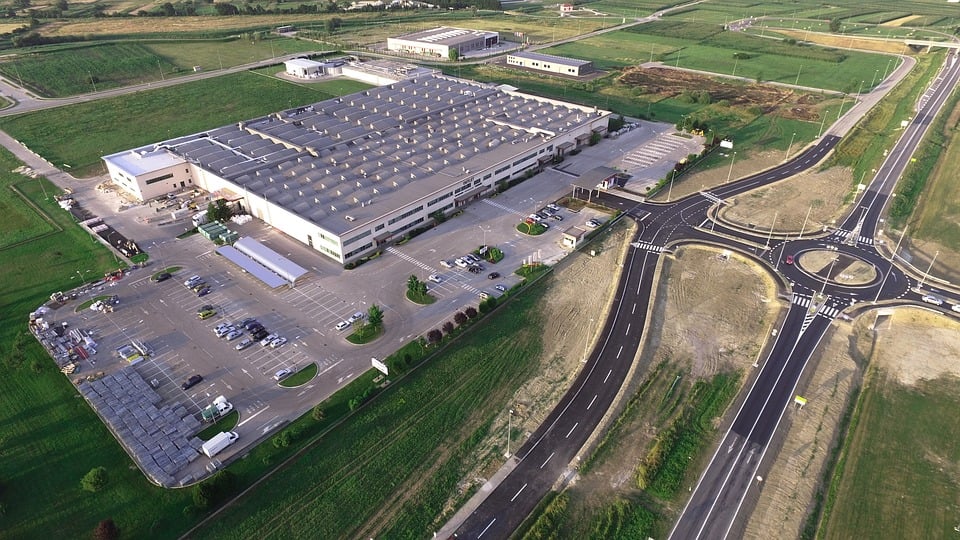Sustainability | March 21, 2024
What the SEC’s final climate rule means for you
The wait for clarity is over. Two years after initially proposing corporate climate-related disclosure requirements in 2022, the U.S. Securities and Exchange Commission (SEC) finalized its much-anticipated rule on March 6, 2024. The final rule specifies which companies are required to report, what information they are required to disclose, and when staged deadlines go into effect for complying.
But how do the commission’s rules affect your facilities’ GHG reporting and net-zero or sustainability strategy? In this blog post, we’ll take a closer look at what the final rules means for facilities and energy managers, sustainability professionals, and real estate investors.
* Short on time and want to find out how to get started on preparing for SEC disclosure? Jump ahead to “Implications for facilities, energy, and sustainability managers.”
An overview: SEC climate disclosure in brief
The new rule (all 886 pages of it!) — “The Enhancement and Standardization of Climate-Related Disclosures for Investors” — specifies the climate-related information that publicly traded companies must disclose in registration statements and annual reports.
The SEC’s rule builds upon a foundation of both the Task Force on Climate-related Financial Disclosures (TCFD) framework and the GHG Protocol. Importantly, though, per the SEC, its new rules “diverge from both of those frameworks in certain respects where necessary for our markets and registrants and to achieve our specific investor protection and capital formation goals.”
In general, the SEC rules apply to all public companies under its jurisdiction, inclusive of domestic SEC registrations as well as select qualifying foreign companies. Precisely what information companies are required to include in their disclosures and the effective date for compliance varies by company type, but does generally include disclosures about governance and oversight of risk, as well as assurance over GHG emissions (when applicable).
The climate-related information companies are required to disclose include physical risk (such as the acute or chronic exposure to the potential for wildfire or flood damage) and transition risk (involving how a company adapts to a changing landscape of policy and legal, technology, market, and reputational factors during the shift to a low-carbon economy). Some companies must also report aspects of their GHG emissions.
The common denominator for all of the climate-related information is that, for it to be required under the SEC rule, it must pass a financial materiality threshold. Per Columbia University’s Sabin Center for Climate Change Law, “a matter is material if there is a substantial likelihood that a reasonable investor would consider it important when determining whether to buy or sell securities or how to vote or such a reasonable investor would view omission of the disclosure as having significantly altered the total mix of information made available.”
Which companies are required to report?
For reporting climate-related physical and transition risks, the SEC rule applies to all publicly traded U.S. companies and select international companies. An estimated 7,000 domestic companies fall into this category.
For reporting GHG emissions, only companies classified as large accelerated filers (LAFs) and accelerated filers (AFs) are required to disclose emissions. LAFs are defined as having at least $700 million in shares held by public investors. AFs are defined as having $75–700 million in public shares, according to the SEC. Non-accelerated filers (NAFs), smaller reporting companies (SRCs), and emerging growth companies (EGCs) are exempt from GHG emissions reporting.
The SEC estimates that roughly 2,800 U.S. companies and 540 foreign companies with business in the U.S. will need to report emissions information, as reported by the Associated Press.
When do compliance dates go into effect?
Compliance goes into effect with staggered deadlines, dependent upon your company’s classification and the information being reported.
- LAFs: Requirements for disclosures and financial statements go into effect during FYB 2025 and FYB 2026. Requirements for GHG reporting and assurances go into effect for FYB 2026, followed by FYB 2029 (limited assurance) and FYB 2033 (reasonable assurance).
- AFs: Requirements for disclosures and financial statements go into effect during FYB 2026 and FYB 2027. Requirements for GHG reporting and assurances go into effect for FYB 2028, followed by FYB 2031 (limited assurance).
- NAFs, SRCs, and EGCs: Requirements for disclosures and financial statements go into effect during FYB 2027 and FYB 2028. GHG emissions reporting is not required.
The bottom line: if you’re an LAF or AF, it’s time to start getting your climate risk disclosure house in order now, because your first compliance deadline is just 1–2 years away.
What information are companies required to disclose?
Climate-related disclosures, financial statements, and emissions reporting (if applicable) span several major buckets of information:
- Risk management: physical and/or transition risks that have had or are reasonably likely to have a material impact on the registrant, including on its strategy, results of operations, or financial condition in the short-term (i.e., the next 12 months) and in the long-term (i.e., beyond the next 12 months)
- Strategy and planning: i) activities undertaken to mitigate or adapt to a material climate-related risk; ii) scenario analysis and/or adoption of a transition plan; use of an internal carbon price
- Governance: i) any oversight by the board of directors of climate-related risks and any role by management in assessing and managing the registrant’s material climate-related risks; ii) any processes the registrant has for identifying, assessing, and managing material climate-related risks and whether and how any such processes are integrated into the registrant’s overall risk management system
- Emissions and financial metrics: i) the capitalized costs, expenditures expensed, charges, and losses incurred as a result of severe weather events and other natural conditions, such as hurricanes, tornadoes, flooding, drought, wildfires, extreme temperatures, and sea level rise; ii) if a registrant has set a climate-related target or goal that has materially affected or is reasonably likely to materially affect the registrant’s business, results of operations, or financial condition; iii) for LAFs and AFs only, material Scope 1 and/or Scope 2 emissions (but not Scope 3 emissions)
A closer look at emissions reporting: Scopes 1 + 2 are in, 3 is out!
As expected, the SEC is requiring that qualifying companies report their Scope 1 (direct emissions) and Scope 2 (indirect emissions from purchased energy, especially electricity) GHG emissions.
Based on the original SEC rule proposal, your company may have also anticipated a need for Scope 3 reporting — the other indirect emissions that happen upstream and downstream in your supply or value chain. But the SEC stopped short of mandating Scope 3 reporting, which was excluded from the final rule.
Even so, it’s important not to overlook Scope 3 in bigger-picture sustainability strategy. Investor interest is on the rise, after all, and related requirements for Scope 3 are set to take effect soon, including in California and the European Union.
Implications for facilities, energy, and sustainability managers — as well as REITs and other real estate investors
There are a lot of details and fine print amidst the 886 pages of the SEC’s final rule. (This is one reason why companies have a year or more before the first of the staged compliance deadlines goes into effect.) But this handy five-point checklist of questions can help you start to wrap your head around implications for your company and your role within that company:
- Are you a publicly traded U.S. company or qualifying foreign entity? If yes, the SEC rules apply regarding climate-related physical and transition risks to your financials.
- Are you a large accelerated filer (LAF) or accelerated filer (AF)? If yes, reporting your Scope 1 and Scope 2 GHG emissions is also in play.
- Are you an owner-occupant or tenant / lessee of your facilities? If yes, your facilities’ energy use data and corresponding emissions are going to be central to reporting your Scope 1 and Scope 2 emissions.
- Are you a landlord / lessor, real estate investment trust (REIT), or other real estate investor? If yes, facility energy use data and corresponding emissions are probably part of your Scope 3 financed emissions, and therefore not required under the SEC rule. (Keep in mind: you still do have to disclose physical and transition risk details.)
- What boundary do you draw for GHG accounting? Whether your company uses the equity share, financial control, or operational control approach will determine if you apply facility-related emissions toward your Scope 1 and Scope 2 emissions or toward your Scope 3 emissions, as well as how big (or small) those emissions numbers might be.
Following the new rule may not come easy for any company, depending on how far along they are in their own sustainability journey. But broadly speaking, owner-operated facilities with a relatively manageable number of sites under their thumb will find it simpler to achieve compliance than REITs, which could have anywhere from dozens to hundreds of assets to track.
REITs will be harder-pressed to collect the necessary data from far-flung, externally operated sites in the required timelines. Advanced data and analytics solutions will be critical to success, along with expert partners with experience in accurate reporting across large portfolios.
The takeaway for all facility leaders
Whether the SEC rule directly affects your company or not, every organization can consider its end purpose: “to elicit more consistent, comparable, and reliable information ... to enable informed assessments of the impact of climate-related risks.”
By getting a firm grip of your facilities’ contributions to and vulnerability to climate change, you can help power better informed decisions for your business, now and into the future.
Contact a Mantis pro to learn how Mantis can support your climate disclosure success with portfolio-wide facilities optimization.
Related Posts
Discover more content and insights from Mantis Innovation

Carbon Credits Explained: A Primer for Achieving Your ESG Goals
In the race to achieve net-zero emissions, carbon credits have become a crucial tool for companies with hard-to-abate emissions. As of 2024, almost half of the Fortune 500 companies have net zero

Five Trends Driving Data Center Facility Energy Optimization
Today’s digital economy, commercial and industrial digitalization, and the recent explosion in artificial intelligence and machine learning (AI/ML) powered computing are driving massive growth in

Modernizing Manufacturing Facilities: The Drivers and Direction
This blog is just a glimpse into the deep dive we take in our new white paper, Modernizing Manufacturing. Download the white paper here to skip the teaser and get the whole story. The stage is set

Federal and State Policies Driving Commercial Fleet Electrification
As governments and industry transition to a low-carbon economy, regulations have begun rolling out at the federal level and in leading-edge states focused on commercial fleet electrification. Policy